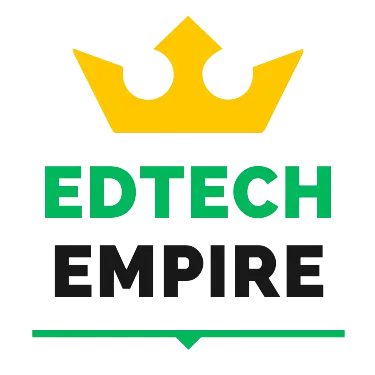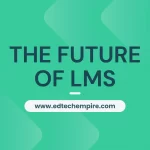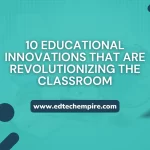![]()
We live in the digital age, and technology plays an important role in our lives. Metaverse is one of the most intriguing and exciting technologies. This blog post will explain what Metaverse is and how it can benefit teachers. We’ll also look at the best free Metaverse platforms and how teachers can use them to improve their teaching. So, let’s get started!
Table of Contents
What is Metaverse?
The Metaverse is a blockchain-based virtual world. It is a three-dimensional online environment in which users can interact with one another and with virtual objects. It is a decentralized platform that is owned and run by its users. It is an open platform on which developers can build applications. Metaverse also provides a safe and transparent environment for users to conduct business with one another.
Metaverse differs from other virtual worlds in that it is an open platform owned by no single company. This means that users can build their own applications and experiences on the platform. It is also different from the conventional internet as it is not centralized. It is instead a distributed network of computers that are all linked to one another.
How Metaverse works?
Metaverse operates on a distributed ledger technology known as blockchain. This technology enables users to conduct secure and transparent transactions. The blockchain, which is a public ledger, records all transactions. All transactions are thus visible to all users.
Smart contracts are also used on the Metaverse platform to facilitate user transactions. Smart contracts are pieces of code used to carry out transactions. They are self-executing contracts that can be programmed to perform specific actions in response to certain conditions being met.
How Metaverse can be useful in education?
Metaverse can be used to enhance the learning experience in the classroom. It can be used to create virtual classrooms and simulations for teaching students. It can also be used to create virtual simulations that allow students to experience real-world scenarios without having to leave the classroom.
Metaverse can also be used to create virtual internships and other learning opportunities. These opportunities can provide students with practical experience in their chosen field. This can help them understand the topics they are studying and develop skills that will be useful later in life.
Metaverse can also be used to organize virtual meetings and other events. Teachers can use this to connect with other educators and experts from all over the world. It can also host lectures and presentations from experts in various fields.
Top free Metaverse platforms
There are several free Metaverse platforms available for teachers to use. The most popular ones are:
Decentraland
Decentraland is a decentralized virtual reality platform that allows users to create, experience, and monetize virtual world content and applications. Decentraland can be used in education to create immersive and interactive learning environments, as well as to facilitate distance learning and to create interactive simulations and role-playing scenarios. It provides users with a variety of tools and resources for creating and designing their own virtual experiences, such as 3D modeling software, scripting languages, and a marketplace for purchasing and selling virtual assets. Decentraland provides educators with a flexible and engaging platform to improve their students’ learning experiences.
VRChat
VRChat is a social virtual reality platform where users can create, share, and explore virtual worlds and interactive experiences. VRChat can be used in education to create immersive learning environments, distance learning, and interactive simulations and role-playing scenarios. It is available on VR devices such as Oculus Quest, Oculus Rift, and HTC Vive, and provides a flexible and engaging platform for educators to enhance their students’ learning experiences.
Edverse
Edverse is a free educational metaverse platform that aims to provide an immersive and interactive 3D learning experience. It enables users to connect with global peers and access educational resources regardless of their geographic location. Edverse takes a non-linear approach to education, allowing users to investigate multiple subjects and skills via parallel learning paths. The platform also makes use of blockchain technology to capture and record educational experiences, as well as to issue course completion certificates. Edverse provides a virtual education landscape complete with futuristic, ancient, and modern education hubs where users can teach, learn, create, and participate in a knowledge economy.
Sansar
Sansar is a metaverse and virtual reality platform that allows users to create, publish, and explore immersive and interactive experiences. Sansar can be used in education to create immersive and interactive learning environments, as well as to facilitate distance learning and to create interactive simulations and role-playing scenarios. It provides users with a variety of tools and resources for creating and designing their own virtual worlds, such as 3D modeling software, scripting languages, and a marketplace for purchasing and selling virtual assets. Sansar provides educators with a flexible and engaging platform to improve their students’ learning experiences.
Rec Room
Rec Room is a social virtual reality platform where users can play games, create and customize avatars, and explore virtual worlds with friends. Rec Room can be used in education to create immersive and interactive learning environments, as well as to facilitate distance learning and to create interactive simulations and role-playing scenarios. It is available on desktop and VR devices such as Oculus Quest, Oculus Rift, and HTC Vive, and provides a flexible and engaging platform for educators to enhance their students’ learning experiences.
Spatial
Spatial is a virtual and augmented reality collaboration platform that enables users to interact and collaborate in virtual environments in real time. Spatial can be used in education to create immersive and interactive learning environments, to facilitate distance learning, and to develop interactive simulations and role-playing scenarios. It is available on desktop, VR, and AR devices such as Oculus Quest, Oculus Rift, and Microsoft HoloLens, and provides a flexible and engaging platform for educators to enhance their students’ learning experiences.
These are some of the top free Metaverse platforms. Each of these platforms has its own set of requirements, features, and capabilities. Some may not be even suitable for young kids. so doing some research to find the one that best meets your needs is essential.
How teachers can use Metaverse for teaching?
These top free metaverse platforms for teachers can be used in a variety of ways. Here are some of the most common methods:
- Virtual Classrooms: Teachers can use Metaverse to create virtual classrooms where they can teach their students. This can be an excellent way to provide students with an interactive and immersive learning experience.
- Virtual Field Trips: Students can also use Metaverse to create virtual field trips. This can be an excellent way to give students hands-on experience in their desired field.
- Virtual Internships: Metaverse can also be used to create virtual internships for students. This can provide students with hands-on experience in their desired field.
- Virtual Conferences: Metaverse is also capable of hosting virtual conferences and other events. Teachers can use this to connect with other educators and experts from around the world.
Tips for teachers on using Metaverse platforms
Here are some tips for teachers using Metaverse platforms:
- Do your research: Before using a Metaverse platform, you should conduct some research to find the one that best meets your requirements.
- Test it out: It is also advisable to test the platform before implementing it in the classroom. This will allow you to become acquainted with the platform and ensure that it is operational.
- Be patient: Metaverse platforms can be challenging to use at first, so be patient with yourself and your students.
- Use the tools: Metaverse platforms are rich in features and tools that can help teachers. Make the most of your experience by taking advantage of these tools.
- Get creative: Metaverse platforms are an excellent way to be creative while also engaging students in the learning process. To make the experience more enjoyable, try to find new and exciting ways to use the platform.
Choosing the Right Metaverse Platform
When selecting a Metaverse platform, it is critical to consider your needs as well as the features that each platform provides. Here are some things to think about:
- Cost: It is critical to consider the platform’s cost. Some platforms are free, while others may require a fee.
- Features: It is also critical to consider the features provided by each platform. Some platforms may offer more functionality than others.
- User experience: It is also critical to consider the platform’s user experience. Check that the platform is simple to use and has a good user interface.
- Security: Security is also an important consideration. Check that the platform is secure and that user data is protected.
After considering these factors, you should be able to identify the Metaverse platform that best meets your requirements.
Conclusion
The Metaverse is a blockchain-based virtual world. It is an open platform that is not owned by any single company and on which developers can build applications. Metaverse can be used in the classroom to enhance learning by creating virtual simulations and internships. There are several free Metaverse platforms available, so do some research to find the one that best meets your requirements.
Teachers can use Metaverse to create an engaging and immersive learning experience for their students with the right platform. So, if you want to improve your teaching skills, Metaverse is a great place to start.
Now that you know about the top free metaverse platforms for teachers, you may also be interested to learn how AI can also be used in Education to provide personalized and more efficient learning experience to students. Check our blog post on how one such service called ChatGPT can be used in Education.



